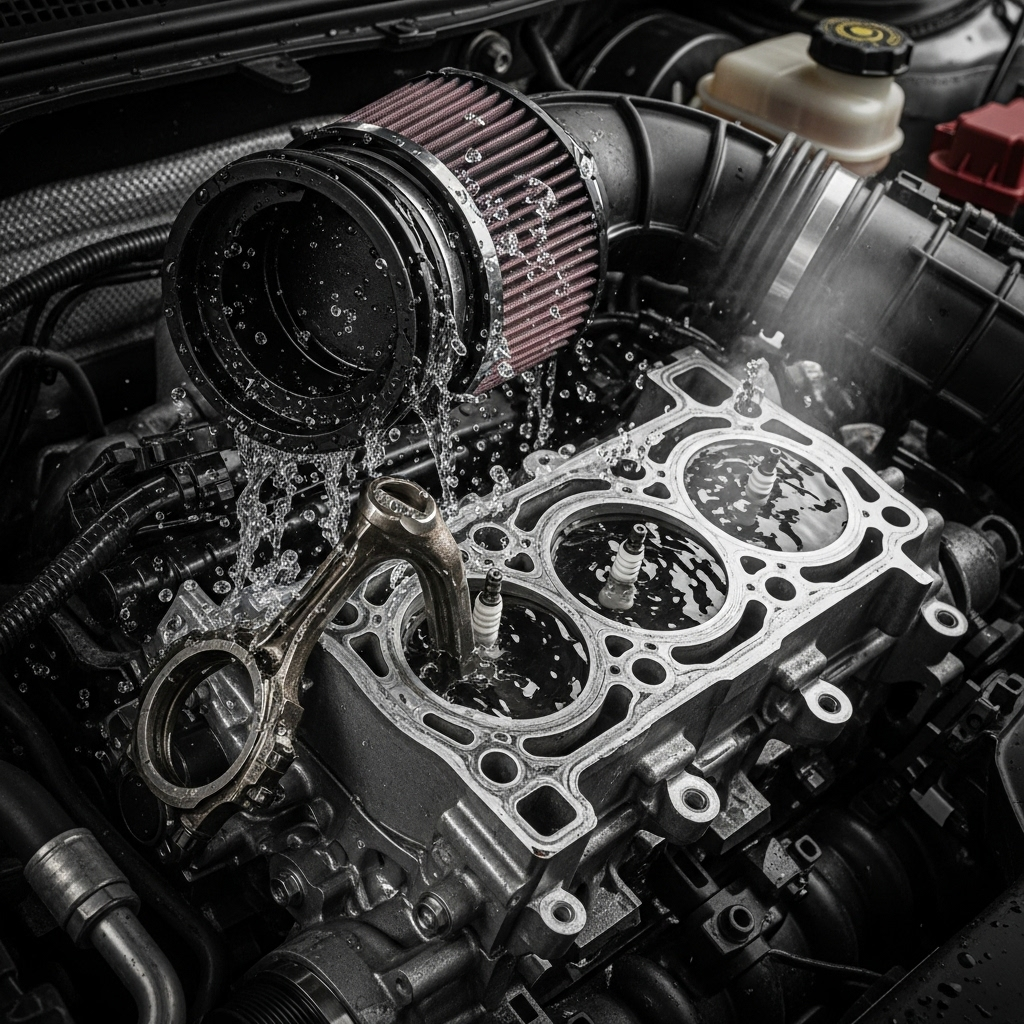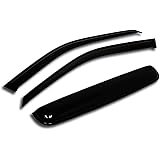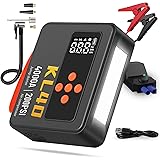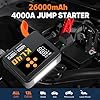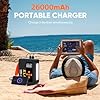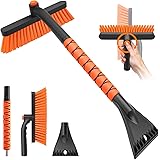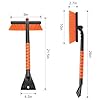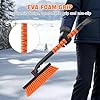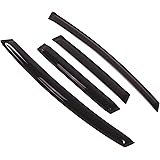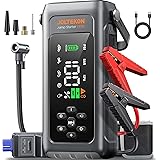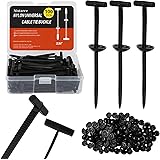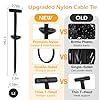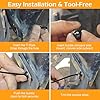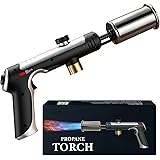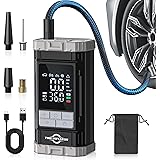Table of Contents
That moment of panic when you see a deep puddle ahead is all too real for drivers with a cold air intake. The fear of catastrophic engine hydrolock can sometimes overshadow the performance benefits of your modification. But what if you could confidently protect your engine? Learning how to prevent hydrolock with a cold air intake is a essential skill that combines the right parts, smart driving habits, and a clear understanding of the risks. This comprehensive guide will walk you through every possible strategy, from simple, cheap fixes to advanced system upgrades, ensuring you can enjoy your cold air intake without the constant worry of a drowned engine.
Hydrolock, short for “hydrostatic lock,” is a terminal event for an engine. It occurs when a volume of liquid, usually water, is sucked into the combustion chamber. Since liquids are nearly incompressible, the piston cannot complete its upward compression stroke. This results in a catastrophic force that can bend connecting rods, shatter pistons, or even crack the engine block. The repair bill often runs into the thousands, making prevention absolutely critical.
What is Hydrolock and Why is a Cold Air Intake a Risk?
To understand the prevention, you must first understand the enemy. Your engine is a powerful air pump, and a cold air intake (CAI) makes it more efficient by relocating the air filter away from the hot engine bay and down into a cooler, denser air stream. This is where the performance gain comes from, but it also introduces the primary risk.
The Mechanics of Hydrolock
An internal combustion engine operates by drawing in air, mixing it with fuel, and compressing it before ignition. The key word here is compress. Air compresses easily; water does not. When water enters the cylinder instead of air, the piston attempts to compress it on the compression stroke. The immovable object (the incompressible water) meets the unstoppable force (the rotating crankshaft). Something has to give, and it’s always the engine’s internal components—typically the connecting rods—that lose, bending or breaking entirely.
How a Cold Air Intake Increases Risk
The stock airbox in most vehicles is positioned high in the engine bay for a reason: to keep it away from road spray and standing water. A cold air intake system deliberately moves the filter lower and closer to the front bumper or fender well to access cooler air. While this location is excellent for power, it also places the filter in the direct path of water splashed up from the tires or sitting on the road surface. The engine doesn’t know the difference between air and water; it will happily suck in whatever is at the end of the intake tube. If that filter is submerged, it acts like a straw, pulling water directly into the engine.
Proactive Prevention: Equipment and Modifications
Your first and most powerful line of defense involves equipping your vehicle with the right hardware. These modifications are designed to physically block water from entering your engine.
Install an Air Intake Bypass Valve
An air intake bypass valve is the single most effective piece of “insurance” you can install on a cold air intake. It is a simple, brilliant device that acts as a safety release for your engine.
How It Works: Imagine drinking from a straw with a small hole poked in the side. As long the bottom of the straw is in the air, you suck your drink up normally. But if you submerge the bottom of the straw in your drink, you’ll instantly start sucking air through the small hole instead. This is exactly how a bypass valve works .
The valve is a secondary, smaller intake that is installed on the intake tube between the main filter and the throttle body. Under normal conditions, the engine’s vacuum pulls air through the main filter. However, if the main filter becomes submerged in water, the vacuum instead pulls air through the higher, dry bypass valve. This prevents the engine from “drinking” through the submerged filter, effectively stopping hydrolock before it can start .
Choosing and Maintaining a Bypass Valve:
- Purchase: Many quality cold air intake kits include a bypass valve. If yours did not, they are available separately from manufacturers like AEM and can be fitted to most intake tubing diameters .
- Inspection: The plastic housing and the internal filter material can degrade over time due to engine bay heat cycles. It is recommended to inspect your bypass valve every few months for brittleness or decay to ensure it will function when needed .
Choose a Hybrid or Short Ram Intake System
If you live in a region with frequent heavy rain or flooding, you might reconsider the type of intake you run.
Hybrid Intake Systems: Some manufacturers offer innovative hybrid intakes. These systems use a sealed box that surrounds the filter (like a short ram) but incorporates a snorkel that ducts cold air from the grille or fender (like a cold air intake). This design offers the best of both worlds: cooler air for performance, with the filter housed in a protected, higher location that is less susceptible to water ingestion .
Short Ram Intake (SRI): A short ram intake keeps the air filter within the engine bay. While it can suffer from “heat soak” in stop-and-go traffic because it pulls warmer air, it positions the filter significantly higher off the ground than a typical CAI. This dramatically reduces the risk of hydrolock, as the filter would only be threatened by water deep enough to flood the entire engine bay .
Maintain Vehicle Splash Shields and Fender Liners
This is a often-overlooked but critical aspect of prevention. Your vehicle’s factory splash shields and fender liners are not just for aesthetics; they are designed to manage airflow and deflect water away from the engine bay.
If you remove these shields or if they are torn and damaged, your cold air intake filter becomes directly exposed to road spray and puddle water. A filter can become saturated with water from heavy splashing without being fully submerged. A waterlogged filter will restrict airflow, causing the engine to stall, and in a worst-case scenario, can still allow water to be drawn into the engine .
Always ensure that all factory splash guards are properly installed and in good condition when running a cold air intake.
Smart Driving Habits: Your Role in Prevention

Technology can help, but the most important factor is you, the driver. No piece of equipment can replace common sense and cautious driving.
Learn to Judge Water Depth
The most straightforward way to avoid hydrolock is to avoid deep water entirely. But judging depth from the driver’s seat can be tricky.
The Safe Depth Rule: A general rule of thumb is that if you cannot see the pavement through the water, you should not drive through it. For a vehicle with a cold air intake, water deeper than 6-8 inches (roughly up to the center of your wheels) starts to become a genuine threat .
Use Other Objects as a Gauge: Look at other vehicles, curbs, and road signs. If the water is splashing up onto the doors of other cars or is approaching the top of a curb, it is far too deep for your vehicle with a CAI.
Master the Technique for Crossing Water
If you must cross a patch of standing water, your technique is everything.
- Slow Down Before Entry: Do not enter the water at speed. This creates a bow wave that can raise the water level directly in front of your vehicle, potentially submerging your intake.
- Maintain a Steady, Slow Pace: Once you enter, maintain a very slow and steady speed, just fast enough to create a small bow wave that pushes water to the sides, but not so fast that you create a large splash.
- Use a Low Gear and High RPM: Keep the engine revolutions per minute (RPM) high by using a low gear (e.g., first or second gear in a manual, or “L” or “1” in an automatic). This does two things: it maintains momentum and, crucially, creates strong exhaust pressure that helps prevent water from backing up into the exhaust system.
- Never Stall and Restart: If your engine stalls in deep water, DO NOT attempt to restart it. Restarting the engine is the single most common cause of hydrolock. If you stall, it is likely that water has already entered the intake. Trying to start it again will only force more water into the cylinders, guaranteeing severe engine damage. The correct action is to shut off the ignition and get the vehicle towed out of the water.
Risk Comparison: Cold Air Intake Configurations
Not all intake setups carry the same level of risk. The following table compares the common types and their relative susceptibility to hydrolock.
| Intake Type | Filter Location | Hydrolock Risk Level | Key Prevention Measures |
|---|---|---|---|
| Stock Airbox | High in engine bay | Very Low | Avoid flooding. Standard factory protection is usually sufficient. |
| Short Ram Intake (SRI) | Inside engine bay | Low to Moderate | Maintain splash shields; avoid deep water. Primary risk is from flooding the engine bay. |
| Hybrid Intake | In a sealed box with a cold air snorkel | Moderate | Bypass valve is still recommended. Offers a good balance of performance and safety. |
| Cold Air Intake (CAI) | Low in fender/bumper | High | Mandatory: Bypass valve, intact splash guards, and extremely cautious driving. |
Emergency Procedures: What to Do If You Suspect Water Ingestion
Even with the best precautions, situations can go wrong. Knowing what to do in the moments after a deep water crossing can save your engine.
- Listen and Feel: Immediately after exiting the water, listen for any unusual sounds like knocking or rattling, and feel for a loss of power or a rough-running engine. These could be signs that water has entered the cylinders.
- Do Not Turn Off the Engine: If the engine is still running smoothly, let it continue to run for a few minutes. This can help burn off any minor moisture that may have entered the system.
- If the Engine Misfires or Stalls: As stated before, do not restart it. Your journey is over. Have the vehicle towed to a safe location.
- Post-Incident Inspection: If you made it through but are concerned, perform a thorough inspection when safe. Check the air filter for moisture. Remove it and tap it on a hard surface; if water drips out, you had a very close call. Consider changing your engine oil, as water vapor can contaminate the oil and reduce its lubricating properties.
Debunking Common Myths About Cold Air Intakes and Hydrolock
Myth: Driving in the rain with a cold air intake will hydrolock my engine.
Truth: Ordinary rain, even heavy rain, is not a threat. The filter would need to be fully or partially submerged in a standing body of water for hydrolock to occur. Road spray from rain is not enough .
Myth: My car is lowered, so I’m guaranteed to hydrolock.
Truth: While lowering your car does reduce ground clearance and brings the intake closer to the ground, it doesn’t make hydrolock a certainty. It simply reduces the depth of water required to become a threat. The same rules apply: avoid deep water. A 6-inch deep puddle is a threat to a lowered car, whereas an 8-inch puddle might be the threshold for a stock-height vehicle .
Myth: A hydroshield (sock-style cover) will prevent hydrolock.
Truth: A hydroshield, or pre-filter, is a water-resistant sleeve that fits over your air filter. It is excellent at protecting your filter from light water spray and dirt, but it is not designed to prevent hydrolock. If the filter and hydroshield become submerged, water will still be drawn through the material and into the engine. Do not rely on a hydroshield as your primary defense.
Final Verdict: How to Prevent Hydrolock with a Cold Air Intake
So, how to prevent hydrolock with a cold air intake? The solution is a multi-layered approach that combines hardware, vigilance, and knowledge.
- Install a Bypass Valve: This is your number one, non-negotiable safety device. It is a relatively low-cost piece of insurance that can save you from a catastrophic engine repair bill .
- Keep Splash Guards Intact: Ensure your vehicle’s factory underbody protection is in place to shield your filter from the worst of the road spray .
- Drive with Utmost Caution: Your right foot is the final arbiter. Actively avoid standing water, and if you cannot, use the slow-and-steady crossing technique. This is the most critical behavioral change you must adopt.
- Know Your Emergency Procedures: If the worst happens and your engine stalls in water, resist the overwhelming urge to restart it. Accept that you need a tow, as this is far cheaper than a new engine.
By following these guidelines, you can mitigate the risks and enjoy the performance and auditory benefits of your cold air intake with confidence. Remember, an informed and cautious driver is the best defense against hydrolock.

